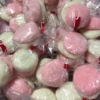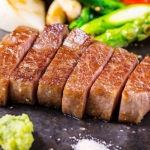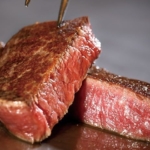The Quick Work of Making Rice Cakes in Nara 🍚
Mochi is a sticky traditional Japanese ingredient made from glutinous rice that is often eaten at events such as Japanese New Year. It is also called Omochi. It is more polite.
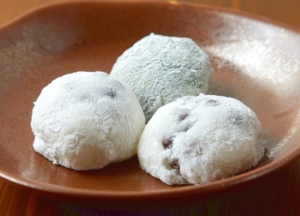
The standard way to eat Mochi is to season it with your favorite seasoning such as soy sauce or sugar.
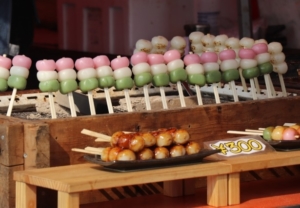
A typical method of making mochi is “Tsuki-mochi (pounded mochi)". The process of beating steamed glutinous rice to make Tsuki-mochi is called “Mochi- tsuki" (pounding mochi).

Usu (mortar) and Kine (pestle) are used for Mochi-tsuki. Usu is a large container with its center cut into a semicircle, while Kine is a large tool shaped like a wooden mallet.
Put the steamed glutinous rice in the Usu and pound it with Kine many times to make Mochi.
However, the process has been automated by machines and is now rarely seen.
In Nara Prefecture, you can see how Mochi-tsuki looks and there is a shop where you can eat delicious freshly made Mochi.
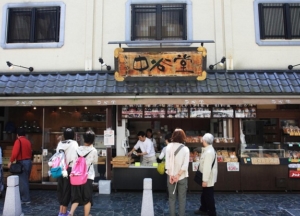
And everyone who has seen Mochi-tsuki says it’s crazy. Let me introduce it to you.
The shop is called “Nakatani-do" and is located a five minute walk from Kintetsu Nara Station. It is not so far from JR Nara Station.
The white walls and the tile roof make you feel the Japanese atmosphere of Nara.
Mochi specializes in takeout, selling only the local specialty “Yomogi-mochi (Mugwort mochi)".
What exactly is crazy Mochi-tsuki performance?
The work is done by two craftsmen. The process is simple: one pounded the Mochi with Kine and the other flipped it over. They do it alternately.
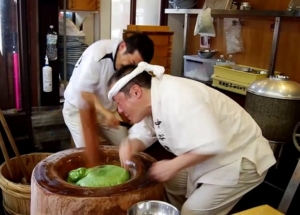
Mochi- tsuki started with energetic shouts! The appearance from here cannot be expressed by characters.
Check out the video below.
This video is not twice as fast. Mochi-tsuki, which is held at such a high speed that you can’t take your eyes off it, is a masterpiece.
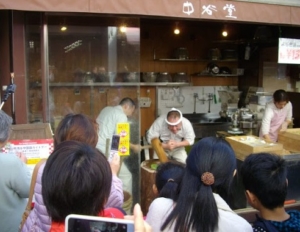
It’s a fast process that requires two people to be in perfect harmony to succeed.
Because of this, it is often featured on TV programs as a performance of a divine art, and many people come to see it.
However, this is not a performance aimed at attracting tourists to the shop.
The owner is very particular about making delicious mochi, and taking over the traditional way of making Mochi in his hometown of Kamikitayama-mura, Nara, is said to be the origin of this high-speed Mochi-tuki.
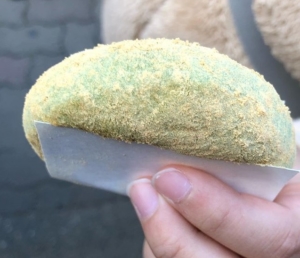
By finishing glutinous rice at once while it is hot, it becomes soft and sticky Mochi.
This seemingly crazy process was an important part of making a good Mochi.
Yomogi is a chrysanthemum plant that has been eaten in Japan for a long time. It is a familiar plant called “Japanese herb" because it is nutritious and has a high aroma.
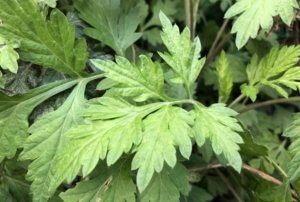
These pale green Yomogi-mochi kneaded with yomogi have a cute round shape that fits in the palm of your hand.
The moment you put it in your mouth, the texture as if you were eating soft ice cream and the natural flavor of mugwort spreads in your mouth.
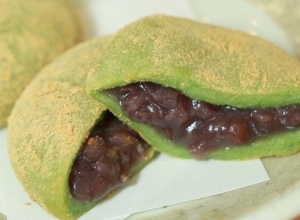
Tsubu-an (sweet bean paste) inside
The surface is coated with kinako and there is plenty of tsubu-an inside.
Tsubu-an has a mild taste with a moderate sweetness, and the characteristic flavor of adzuki leaves a lingering aftertaste.
It is a good point that the price is reasonable at 150 yen per piece.
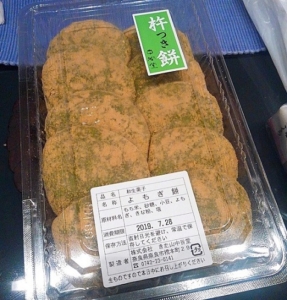
If you are with friends or family, I recommend you to order more than 8 items at once. In that case, the price per piece will be even lower.
The owner said, “Mochi-tsuki is a culture that Japan is proud of. When I thought that I wanted to serve Mochi that everyone would eat with a smile, I thought of the Mochi that I ate in my hometown when I was young."
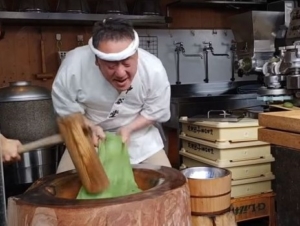
The owner hopes that customers from Japan and other countries will enjoy the cultural assets of Nara with their eyes and taste the traditional Mochi with their tongues.
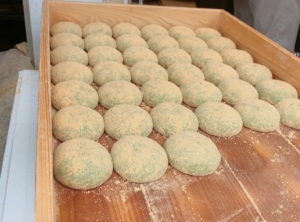
In Nara, which is even more historic than Kyoto, please enjoy the traditional taste of Yomogi-mochi while enjoying “High-speed mochi making".
Information
- Hours: 10:00~19:00
- Closed: Irregular holidays
- Website





